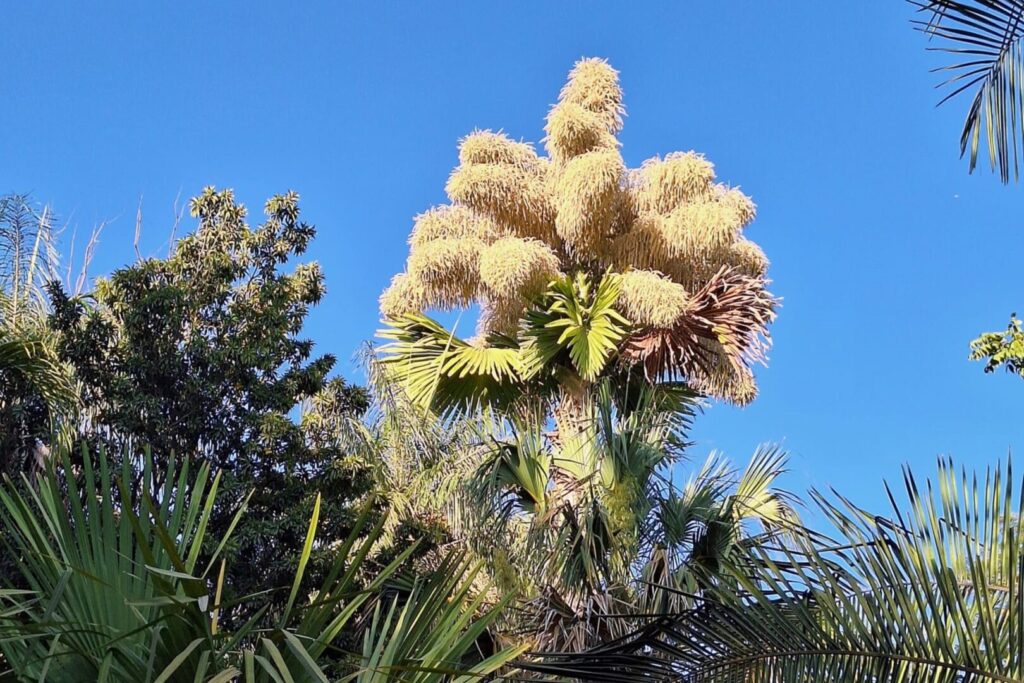It took 33 years for the talipot palm which is located in the Culiacan Botanical Garden to bloom, becoming the first to bloom in the country. Mexico and only the fifth on record in the Americas.
The talipot palm (Corypha umbraculifera) is extraordinary for its size, its peculiar life cycle and its cultural importance for some regions of the world. It produces the largest inflorescence in the plant kingdomwhich can be up to 8 meters long. The flowers are white or creamy white and produce a large amount of nectar.
"This particular plant produces the largest inflorescence or set of flowers in the plant kingdom, it is approximately five to six meters, to give you an idea there are about ten million flowers, when the palm flowers are about 500 kilos of fruit," Carmelo Cortes, a biologist at the Botanical Garden of Culiacan, told TV Azteca.
The talipot palm is a species of palm tree native to Sri Lanka, India and some other Southeast Asian countries.
"It is a plant that has been cultivated in tropical regions, so climates like Culiacán are very good for it, it is a plant that does not tolerate the cold at all, it requires very deep soils as it is a very large and very heavy plant, the mass of roots it generates is enormous," said biologist Antonio Gómez.
A pride of the Botanical Garden
In December 2023, the team of technicians of the Culiacan Botanical Garden realized that the largest specimen of the talipot that they kept in the Palmetumwith an estimated age of 37 years, was generating an abnormal structure right where the crown of leaves ends, biologist Carmelo Cortés told EFE News.
"Upon closer examination of the structure, it was concluded that the palm was entering the reproductive stage," he said.
By the first half of April it had already produced inflorescence, becoming the first specimen of this species to do so on Mexican soil.

There are records of four other specimens that have flourished in the Americas, all of which occurred in Venezuela y Puerto Rico.
It should be noted that the talipot palm spends most of its life accumulating energy before flowering. The inflorescence may last for several months or even more than a year and then the plant dies. This process, known as monocarpismis characteristic of some species of palm trees, including the Corypha umbraculifera.
Once the plant dies, its seeds can be dispersed and germinate, giving rise to a new generation of palms talipot.
If you live in Culiacan If you have the opportunity to visit this city, the Botanical Garden becomes a mandatory stop where you can admire this beauty that occurs for the first time in Mexico.
Characteristics of the talipot palm
- It is one of the largest palm trees in the world, reaching heights of up to 25 meters.
- It has the largest leaves of any plant, which can measure up to 5 meters long and 3 meters wide.
- It produces a gigantic inflorescence that can be up to 8 meters long, the largest in the plant kingdom.
- The flowering of the talipot palm occurs once in a lifetime and can take up to 60 years to flower.
- Flowering can last several months or even more than a year, after which the plant dies.


